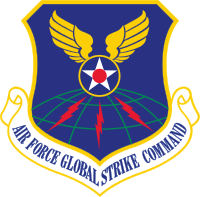2d Bomb Wing
| 2d Bomb Wing | |
|---|---|
|
Boeing B-52H bomber at Barksdale Air Force Base | |
| Active | 15 October 1947 – present |
| Country |
|
| Branch |
|
| Role | Bomber |
| Part of |
Air Force Global Strike Command Eighth Air Force |
| Garrison/HQ | Barksdale Air Force Base |
| Motto(s) |
LIBERTATEM DEFENDIMUS Latin: We Defend Liberty |
| Aircraft | B-52 Stratofortress |
| Decorations | see "Lineage and Honors" section below |
| Commanders | |
| Current commander | Colonel Ty W. Neuman |
| Notable commanders |
George J. Eade Eugene E. Habiger Charles T. Robertson, Jr. John Dale Ryan |
| Insignia | |
| 2d Bomb Wing emblem (approved 10 August 1951)[1] |
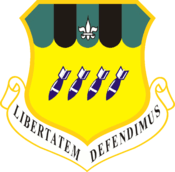 |
The 2d Bomb Wing is a United States Air Force unit assigned to the Air Force Global Strike Command and Eighth Air Force. It is stationed at Barksdale Air Force Base, Louisiana. The wing is also the host unit at Barksdale. The wing was assigned to the Air Force Global Strike Command in February 2010 as part of the reassignment of Eighth Air Force.
The 2 BW is one of only two B-52H Stratofortress wings in the United States Air Force, the other being the 5th Bomb Wing at Minot Air Force Base, North Dakota.
Its 2d Operations Group is the oldest bomb group of the Air Force, having fought on the Western Front as the 1st Day Bombardment Group during World War I, entering combat on 12 September 1918.[2] It After the war, it participated in Brigadier General Billy Mitchell's 1921 off-shore bombing test. Active for over 60 years, the 2 BW was a component wing of Strategic Air Command (SAC)'s heavy bomber deterrent force throughout the Cold War.
The 2d Bomb Wing is commanded by Colonel Ty W. Neuman.[3] Its Command Chief Master Sergeant is Teresa W. Clapper.[4]
Units
Today, as the largest bomb wing in Air Force Global Strike Command and as a part of the historic "Mighty Eighth" Air Force, the wing continues to reflect the heritage of its motto Libertatem Defendimus: "Liberty We Defend."
- 2d Maintenance Group
- 2d Maintenance Squadron
- 2d Maintenance Operations Squadron
- 2d Aircraft Maintenance Squadron
- 2d Munitions Squadron
- 2d Medical Group
- 2d Operations Group
- 2d Operations Support Squadron ("Posse")
- 11th Bomb Squadron
- 20th Bomb Squadron ("Buccaneers")
- 96th Bomb Squadron ("The Devil's Own")
- 2d Mission Support Group
- 2d Contracting Squadron
- 2d Communications Squadron
- 2d Civil Engineer Squadron
- 2d Logistics Readiness Squadron
- 2d Mission Support Squadron
- 2d Security Forces Squadron
- 2d Services Squadron
History
- See 2d Operations Group for additional history and lineage information prior to 1947
Medium bomber era
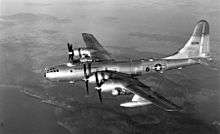
The 2d Bombardment Wing was activated by the United States Air Force on 5 November 1947 and was assigned to the Strategic Air Command Eighth Air Force. At the time of its activation, wing headquarters remained non-operational; its assigned 2d Bombardment Group being attached to the 43rd Bombardment Wing at Davis-Monthan AFB, Arizona.
At the time of its activation, there was considerable debate about where to station the new wing. Its planned station, Chatham Air Force Base, Georgia was a World War II training airfield with facilities deemed inadequate by SAC. Located approximately 10 miles northwest of Savannah, Georgia, Chatham had an adequate airfield for B-29 operations, however the base's cantonment area was in extremely poor condition. Constructed to last for five years, the buildings had reached the end of their life expectancy. In addition, the buildings' shortcomings also included outside latrines and potbellied stoves for heating.
Work was begun to modernize the base from its World War II wartime configuration into a permanent Air Force Base with modern facilities. On 1 January 1949 wing headquarters was activated at Chatam, with the 2d Bomb Wing assuming the assets of the 307th Bombardment Group which had been deployed to the base from MacDill Air Force Base, Florida and the assets of the 2d Bombardment Group, which had returned from a deployment to RAF Lakenheath, England. Equipped with B-29 Superfortresses, the wing's primary mission was training for strategic bombardment operations. In early 1949, the first B-50 Superfortresses began to arrive, replacing the B-29s. A derivative of the B-29, the B-50 was designed for atomic warfare, had faster, more powerful engines and could fly at higher altitudes than the B-29.
The facilities, however, at Chatham remained unsatisfactory to SAC leadership, and plans were initiated to move the wing to better facilities. The city of Savannah, however, offered the USAF the facilities at the former Hunter Army Airfield, which was located closer to the city (5 miles NW), along with 3,500 acres (14 km²) of additional land around Hunter for future base expansions. Hunter Field was built in 1929 as Savannah Municipal Airport and in 1940 the Air Corps received approval to build a permanent base at the site. During World War II it was used both as a training base as well as an antisubmarine airfield during the war. In June 1946, the airfield was returned to the City of Savannah. In addition, Headquarters, Eighth Air Force was established in Savannah in January 1942, and there was a strong desire to have an Eighth Air Force wing be stationed in the area. This arrangement was agreed to and on 29 September 1950, the 2d Bomb Wing moved to the reopened Hunter Air Force Base and Chatam was turned over to the City of Savannah, where it was redeveloped into a regional airport.
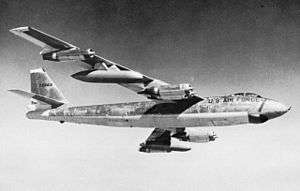
B-50 Superfortress operations continued until November 1953, when the 2 BW began receiving jet-powered B-47E Stratojet medium bombers. The B-47 was a fast bomber which relied on speed to penetrate the air defenses of the Soviet Union, and was produced in large numbers. It became the mainstay of the medium-bombing strength of SAC all throughout the 1950s. The wing participated in SAC REFLEX deployments to North Africa and England. Beginning in 1958 the B-47 was becoming obsolete, as the air defenses of the Soviet Union improved. The Stratojet was phased out of SAC beginning in 1960.
Plans were made to upgrade the wing to the Boeing B-52 Stratofortress. However, although adequate for B-47 operations, the runway at Hunter was inadequate for B-52 operations when tested in the early 1960s. In addition, during the 1950s the urban area of the City of Savannah was expanding and encroaching on the airfield, making Hunter unsuitable for heavy nuclear-equipped bomber operations over the urbanized area. A 1958 Tybee Island B-47 crash in which a Mark 15 hydrogen bomb was lost in the Atlantic Ocean just off the coast of Savannah was another reason in the decision by SAC to move the Wing to a non-urban area.
In early 1963 the wing began to send its B-47s to storage at Davis-Monthan Air Force Base, Arizona. The 2d Bombardment Wing would be moved, and Hunter AFB was reassigned to Military Air Transport Service (MATS). MATS closed its facilities at Donaldson Air Force Base, South Carolina and reassigned the 63rd Troop Carrier Wing to Hunter, using the base for Douglas C-124 Globemaster II intercontinental cargo aircraft operations to points around the world.
B-52 Stratofortress
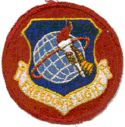
The 2d Bombardment Wing moved to Barksdale AFB, Louisiana on 1 April 1963 where it assumed the existing B-52F Stratofortress heavy bombers and personnel of 4238th Strategic Wing (SW). The wing has been stationed at Barksdale continuously for over 50 years.
4238th Strategic Wing
B-52 operations at Barksdale can be traced to 1 March 1958 when SAC established the 4238th SW.[5] and assigned it to the 4th Air Division[6] as part of SAC's plan to disperse its Boeing B-52 Stratofortress heavy bombers over a larger number of bases, thus making it more difficult for the Soviet Union to knock out the entire fleet with a surprise first strike.[7] The 4338th was initially assigned only three maintenance squadrons, but on 15 April, the 4238th Air Base Group was activated under the wing as the host organization for Barksdale when the 805th Air Base Group[5] and the 301st Bombardment Wing[8] were inactivated. The 301st and 376th Air Refueling Squadrons, flying Boeing KC-97 Stratotankers were transferred to the wing from the 301st while the 20th Aviation Depot Squadron was transferred from the 805th to oversee the wing's special weapons. In June, the 913th Air Refueling Squadron, flying Boeing KC-135 Stratotankers was activated in anticipation of the arrival of the Boeing B-52 Stratofortress. The two KC-97 units were inactivated or transferred from Barksdale by 1962.[5]
The wing gained its fourth operational squadron on 1 August when the 436th Bombardment Squadron (BS), consisting of 15 Boeing B-52 Stratofortresses moved to Barksdale from Carswell AFB, Texas where it had been one of the three squadrons of the 7th Bombardment Wing.[9] Starting in 1960, one third of the squadron's aircraft were maintained on fifteen-minute alert, fully fueled and ready for combat to reduce vulnerability to a Soviet missile strike. This was increased to half the squadron's aircraft in 1962.[10] The 4238th (and later the 2d) continued to maintain an alert commitment until the end of the Cold War. In 1962, the wing's bombers began to be equipped with the GAM-77 Hound Dog and the GAM-72 Quail air-launched cruise missiles, The 4134th Airborne Missile Maintenance Squadron was activated in November to maintain these missiles.
2d Bombardment Wing, Heavy
In 1962, in order to perpetuate the lineage of bombardment units with illustrious World War II records, Headquarters SAC received authority from Headquarters USAF to discontinue its Major Command controlled (MAJCON) strategic wings that were equipped with combat aircraft and replace them with Air Force controlled (AFCON) units, which could carry a lineage and history.[11] Rather than inactivate the 2d Bombardment Wing when Hunter closed, SAC moved it to replace the 4238th SW.[12] and assume its mission, personnel, and equipment.[13]
In the same way the 20th Bombardment Squadron, one of the unit's historical bomb squadrons, replaced the 436th BS.[14] The 855th Medical Group, 20th Munitions Maintenance Squadron and the 913th Air Refueling Squadron were reassigned to the 2d. The 4238th's support group and maintenance squadrons were replaced by ones with the 2d numerical designation. Each of the new units assumed the personnel, equipment, and mission of its predecessor.
At Barksdale, 2 BW supported Second Air Force's post-attack command and control system from April 1963 until March 1970. It conducted bombardment training and air refueling operations from April 1963 except for periods when all aircraft and crews were on loan to SAC organizations involved in combat operations in Southeast Asia. It began supporting SAC operations in Southeast Asia with aircraft and personnel in 1965, and increasingly supported these operations in 1966 and 1967. On 15 April 1968, gained a second B-52 and a second KC-135 squadron, again becoming a SAC "super" wing. From late May 1972 until 26 October 1973, it loaned all wing B-52 resources to SAC organizations in the Far East and Southeast Asia. From May 1972 to early November 1972 the wing loaned all but four of the wing's KC-135s and a few aircrews to other SAC units. After the return of combat resources, the wing continued supporting SAC operations in Southeast Asia into 1975, on a reduced scale.[12]
Gained KC-10 tankers in November 1981 to augment refueling operations for the USAF, AFRES, and ANG. Provided air refueling for rescue efforts in Grenada, October–November 1983, the attack on Libya, April 1986, and the invasion of Panama, December 1989 – January 1990. Presented the Omaha Trophy for "the Outstanding Wing in the Strategic Air Command" f2. Deployed B-52, KC-135, and KC-10 aircraft, aircrews, and support personnel to several locations in support of operations in Southwest Asia, 7 August 1990 – 17 April 1991.
1991 Gulf War
Operations Desert Shield and Desert Storm brought Barksdale warriors into the spotlight again with their efforts to liberate Kuwait.
The 596th Bomb Squadron, 2d Bomb Wing flew what was then the longest combat mission in the history of military aviation at the start of Desert Storm in 1991. Seven B-52s flew a 35.4-hour mission On 16–17 January 1991 and, for the time in U.S. Air Force history, fired a devastating barrage of conventional Air Launched Cruise Missile (CALCMs). The official name of this mission was SENIOR Surprise, unofficially it was referred to as Secret Squirrel. The 2d Bomb Wing delivered one-fourth of all U.S. Air Force bombs during Desert Storm. The 2d Bomb Wing KC-135s and KC-10s provided more than 1,000 of the 13,700 coalition refueling missions.

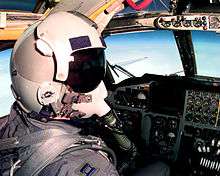
Two 2d Bomb Wing B-52s conducted a missile strike against surface-to-air missile sites and air defense radars in Iraq in September 1996. Desert Strike was ordered in response to Iraqi attacks on Kurds in northern Iraq. The mission earned the wing the prestigious 1996 Mackay Trophy as the most meritorious flight of the year.
The 2d Bomb Wing took part in Operation Southern Watch, Desert Fox and Allied Force throughout the late 1990s.
On 19 September 2001, wing elements deployed to Diego Garcia and on 7 October flew early attacks on targets in Afghanistan in Operation Enduring Freedom to rid that country of terrorist bases and its extremist Taliban rulers and Al-Qaeda militants; later flew airborne alert missions and, in Operation Anaconda, flew bombing missions against targets in eastern Afghanistan, 1–18 March 2002. In the 2003 Invasion of Iraq, flew missions on 21 March in "shock and awe" strikes against command and control targets.
Lineage
- Established as 2d Bombardment Wing, Very Heavy on 15 October 1947
- Organized on 5 November 1947
- Redesignated: 2d Bombardment Wing, Medium on 12 July 1948
- Redesignated: 2d Bombardment Wing, Heavy on 1 April 1963
- Redesignated: 2d Wing on 1 September 1991
- Redesignated: 2d Bomb Wing on 1 October 1993.
Assignments
|
|
Components
Groups
- 2d Bombardment (later, 2d Operations): 5 November 1947 – 16 June 1952 (detached 17 November 1947 – 31 December 1948 and 18 February – 16 May 1950); 1 September 1991–present[1]
Squadrons
- 2d Air Refueling Squadron: attached 10 February 1951 – 15 June 1952, assigned 16 June 1952 – 1 April 1963; assigned 3 January 1989 – 1 September 1991
- 11th Bomb Squadron: 1 July 1994–present
- 20th Bomb Squadron: attached 10 February 1951 – 15 June 1952, assigned 16 June 1952 – 25 June 1965
- 32d Air Refueling Squadron: 1 November 1981 – 1 September 1991
- 49th Bombardment Squadron: attached 10 February 1951 – 15 June 1952, assigned 16 June 1952 – 1 April 1963
- 62d Bombardment Squadron: 25 June 1965 – 1 September 1991
- 71st Air Refueling Squadron: 15 April 1968 – 1 September 1991
- 96th Bombardment Squadron: attached 10 February 1951 – 15 June 1952, assigned 16 June 1952 – 1 April 1963
- 308th Air Refueling Squadron: 1 July 1959 – 1 March 1960
- 429th Bombardment Squadron: 1 October 1958 – 1 January 1962
- 596th Bombardment Squadron: 15 April 1968 – 1 September 1991
- 913th Air Refueling Squadron: 1 April 1963 – 1 November 1981. (Active 15 March 1958 – 1 November 1981)[1]
Stations
- Davis-Monthan Field (later Davis-Monthan Air Force Base), Arizona, 5 November 1947
- Chatham Air Force Base, Georgia, 1 April 1949
- Hunter Air Force Base, Georgia, 22 September 1950
- Deployed at RAF Mildenhall, England, May–August 1951
- Deployed at RAF Upper Heyford, England, September–December 1952
- Deployed at Sidi Slimane Air Base, French Morocco, August–September 1954 and July–August 1956.
- Barksdale Air Force Base, Louisiana, 1 April 1963–present
Aircraft
|
|
Awards and campaigns
In addition to the following awards, the wing is entitled to display the two Distinguished Unit Citations earned by the 2d Operations Group during World War II
| Award streamer | Award | Dates | Notes |
|---|---|---|---|
| Air Force Outstanding Unit Award | 1 November 1956 – 1 April 1957 | 2d Bombardment Wing[1] | |
| Air Force Outstanding Unit Award | 1 July 1986 – 30 June 1987 | 2d Bombardment Wing[1] | |
| Air Force Outstanding Unit Award | 1 July 1987 – 30 June 1989 | 2d Bombardment Wing[1] | |
| Air Force Outstanding Unit Award | 1 October 1993 – 31 May 1995 | 2d Bomb Wing[1] | |
| Air Force Outstanding Unit Award | 1 June 1995 – 31 May 1996 | 2d Bomb Wing[1] | |
| Air Force Outstanding Unit Award | 1 June 1996 – 31 May 1997 | 2d Bomb Wing[1] | |
| Air Force Outstanding Unit Award | 1 June 1998 – 31 May 2000 | 2d Bomb Wing[1] | |
| Air Force Outstanding Unit Award | 1 June 2000 – 31 May 2002 | 2d Bomb Wing[1] | |
| Air Force Outstanding Unit Award | 1 January 2008 – 31 December 2009 | 2d Bomb Wing[15] | |
| Air Force Outstanding Unit Award | 1 January 2010 – 31 December 2011 | 2d Bomb Wing[15] |
- Mackay Trophy (for the "Most Meritorious Flight of the Year") 1996
- Omaha Trophy (for the "Outstanding Wing in the Strategic Air Command") (2): 1988, 1992, 2015
In addition to the following awards, the wing is entitled to display the 16 campaign streamers earned by the 2d Operations Group during World War I and World War II
| Campaign Streamer | Campaign | Dates | Notes |
|---|---|---|---|
| Grenada | 1983 | 2d Bombardment Wing[1] | |
| Defense of Saudi Arabia | 2 August 1990 – 16 January 1991 | 2d Bombardment Wing[1] | |
| Liberation and Defense of Kuwait | 17 January 1991 – 11 April 1991 | 2d Bombardment Wing[1] |
Emblem
Blazon: Or, in fess four aerial bombs descending bendwise sinister Azure garnished Argent on a chief engrailed Vert a fleur-de-lis White between two pallets Sable, all within a diminished bordure of the first. The bombs signify original squadrons, the stripes represent major World War I offensives, and the white fleur de lis symbolizes the French location of the battles.
Motto: LIBERTATEM DEFENDIMUS—Liberty We Defend.
See also
- List of B-50 units of the United States Air Force
- List of B-47 units of the United States Air Force
- List of B-52 Units of the United States Air Force
References
Notes
- 1 2 3 4 5 6 7 8 9 10 11 12 13 14 15 16 Robertson, Patsy (11 January 2007). "Factsheet 2 Bomb Wing (ACC)". Air Force Historical Research Agency. Retrieved March 23, 2014.
- ↑ Maurer, Maurer, ed. (1983) [1961]. Air Force Combat Units of World War II (PDF) (reprint ed.). Washington, DC: Office of Air Force History. pp. 25–28. ISBN 0-912799-02-1. LCCN 61060979.
- ↑ "Colonel Ty W. Neuman". Barksdale Air Force Base. May 2016. Archived from the original on 18 September 2016. Retrieved 18 September 2016.
- ↑ "Chief Master Sergeant Teresa W. Clapper". Barksdale Air Force Base. August 2016. Archived from the original on 18 September 2016. Retrieved 18 September 2016.
- 1 2 3 Mueller, Robert (1989). Air Force Bases, Vol. I, Active Air Force Bases Within the United States of America on 17 September 1982 (PDF). Washington, DC: Office of Air Force History. pp. 15–23. ISBN 0-912799-53-6.
- ↑ "Factsheet 4 Air Division". Air Force Historical Research Agency. Archived from the original on 30 October 2012. Retrieved March 12, 2014.
- ↑ "Abstract (Unclassified), Vol 1, History of Strategic Air Command, Jan-Jun 1957 (Secret)". Air Force History Index. Retrieved March 4, 2014.
- ↑ Ravenstein, Charles A. (1984). Air Force Combat Wings, Lineage & Honors Histories 1947–1977 (PDF). Washington, DC: Office of Air Force History. pp. 144–146. ISBN 0-912799-12-9.
- ↑ Maurer, Maurer, ed. (1982) [1969]. Combat Squadrons of the Air Force, World War II (PDF) (reprint ed.). Washington, DC: Office of Air Force History. pp. 538–540. ISBN 0-405-12194-6. LCCN 70605402. OCLC 72556.
- ↑ "Abstract (Unclassified), History of the Strategic Bomber since 1945 (Top Secret, downgraded to Secret)". Air Force History Index. 1 April 1975. Retrieved March 4, 2014.
- ↑ MAJCON units could not carry a permanent history or lineage. Ravenstein, Charles A. (1984). A Guide to Air Force Lineage and Honors (2d, Revised ed.). Maxwell AFB, AL: USAF Historical Research Center. p. 12.
- 1 2 Ravenstein, Combat Wings, pp. 7-9
- ↑ The 2d Wing continued, through temporary bestowal, the history, and honors of the 2d Bombardment Group. It is also entitled to retain the honors (but not the history or lineage) of the 4238th.
- ↑ Maurer, Combat Squadrons, pp. 105-106, 538-540
- 1 2 "Air Force Recognition Programs". Air Force Personnel Center. Retrieved March 23, 2014.
Bibliography
![]() This article incorporates public domain material from the Air Force Historical Research Agency website http://www.afhra.af.mil/.
This article incorporates public domain material from the Air Force Historical Research Agency website http://www.afhra.af.mil/.
- Maurer, Maurer, ed. (1983) [1961]. Air Force Combat Units of World War II (PDF) (reprint ed.). Washington, DC: Office of Air Force History. ISBN 0-912799-02-1. LCCN 61060979.
- Maurer, Maurer, ed. (1982) [1969]. Combat Squadrons of the Air Force, World War II (PDF) (reprint ed.). Washington, DC: Office of Air Force History. ISBN 0-405-12194-6. LCCN 70605402. OCLC 72556.
- Mueller, Robert (1989). Air Force Bases, Vol. I, Active Air Force Bases Within the United States of America on 17 September 1982 (PDF). Washington, DC: Office of Air Force History. ISBN 0-912799-53-6.
- Ravenstein, Charles A. (1984). Air Force Combat Wings, Lineage & Honors Histories 1947–1977 (PDF). Washington, DC: Office of Air Force History. ISBN 0-912799-12-9.
- Ravenstein, Charles A. (1984). A Guide to Air Force Lineage and Honors (2d, Revised ed.). Maxwell AFB, AL: USAF Historical Research Center.
External links
- "About Us: 2nd Bomb Wing History". Official United States Air Force Website. February 3, 2010. Retrieved August 26, 2016.
- Barksdale Air Force Base official web site
- WW2 2nd Bomb Group Association website


